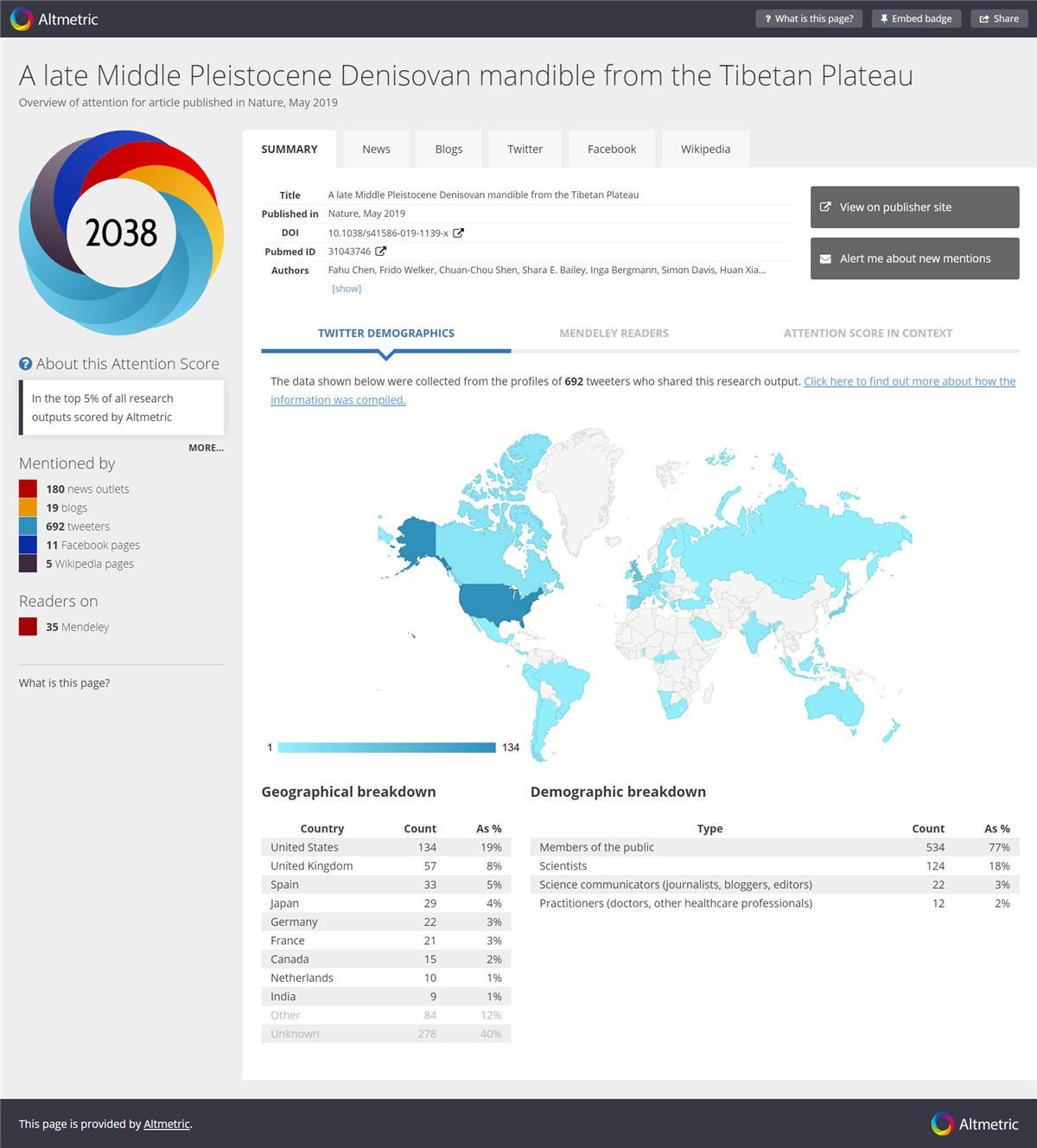On May 2nd, the research article led by Academician Fahu Chen, 'A late Middle Pleistocene Denisovan mandible from the Tibetan Plateau' was published in the journalNature online. After that, the research results have been concerned continuously and widely by the global scientific community and the public. The relevant reports were widely propagated among the public and had an extensive influence in the research fields about the Denisovans and the history of human activities on the Tibetan Plateau.
Before the study on Xiahe Denisovans was officially published online, in view of its possible powerful impact, the journalNature specially held a Chinese and English telephone press conference on April 28 and 29 respectively for this study. The first and corresponding author Fahu Chen was unable to attend the conference because of a field investigation in Central Asia during the press conference. Co-corresponding author Dongju Zhang, Associate Professor of Lanzhou University, Prof. Jean-Jacques Hublin from the Max Planck Institute for Evolutionary Anthropology, Germany, and Dr. Frido Welker from the University of Copenhagen attended the English telephone press conference on behalf of all the authors. More than 30 International media from all over the world attended the conference and it lasted more than one hour. Associate Professor Dongju Zhang and graduate student Huan Xia attended the Chinese telephone press conference. There were 15 domestic mainstream media attending the conference, which lasted nearly one and a half hours. Before and after the press conference, dozens of international and domestic major media, including the journalNature andScience, also conducted special telephone and email interviews with Academician Fahu Chen, Prof. Jean-Jacques Hublin, Associate Professor Dongju Zhang and Dr. Frido Welker, respectively. During the interview, the issue from the media covered almost all aspects of the fossil research, including the discovery of the fossil, the process of collaborative research, the characteristics of Baishiya Karst Cave found the fossil, the characteristics and significance of fossil forms, the analysis results and the importance about ancient protein and DNA, the choice of dating methods and the significance of the chronological age, the significance of the Denisovans study, the history of human activities on the Tibetan Plateau, the adaptation characteristics to the special environmental for prehistoric and modern high-altitude populations, etc. The patient answers from authors ensured that the scientific journalist had a deep understanding about the research, thus ensuring that the report conveyed the content and background of the research in a truthful and popular manner, and made it easy for the public to understand the international frontier research.
After the publication of the research on the Xiahe mandible, it not only was reported globally but also gained wide recognition and praise from the academic and media circles. On the day of the publication, journalNature andScience conducted a profound interpretation and special report on the research. During that, the paleoanthropologists and archaeologists interviewed all affirmed that the research on the fossil is an outstanding work. Not only does it provide important information for the features of the Denisovans but also a critical material to further study on the complex relationship among the ancient East Asian populations. After the article was published, there were 200 international reports from worldwide major media, including Cable News Network (CNN), British Broadcasting Corporation (BBC), The Times, The New York Times, National Geographic, The Washington Post, La Vanguardia, RIA Novosti and Asahi Shimbun. Meanwhile, the research was reported more than 400 times by domestic media, including People's Daily, Xinhua News Agency, China Science Daily, China Economic Net, Guangming Online, Southern Metropolis Daily, The paper, Sina Online, Southern Weekly, etc. It has been learned from the journalNature that the article published in the journalNature is quite excellent if reported more than 100 times, while the Xiahe mandible article has been reported more than 400 times. That indicates the research on the fossil receives much more attention than others. As of today, Altmetric, an international general tool, which tracks the potential impact of articles, shows that the Xiahe mandible article scored 2038 (Fig.1). The rapid growth of this score over the past two weeks suggests that the article quickly gains high attention after its publication. Currently, the article's Altmetric score ranks in the top 5% among all 13 million research articles tracked by Altmetric, and the potential influence is at the top 1%. in the 67,281 research articles published by the journalNature.

Figure1 The Altmetric score of the Xiahe mandible article on May 20th, 2019 and the global distribution of Twitter users concerning the research (The data are missing in some areas due to the language barriers, especially in China)
On May 16th, two weeks after the publication online, the Xiahe mandible article was officially published in Volume 569 of the journalNature. The publication of this article declares the discovery of the Denisovan fossil on the Tibetan Plateau. What’s more, it provides new materials and ideas for the study of many related issues, such as the distribution and living environment of the Denisovans who live before modernHomo sapiens, the evolutionary relationship betweenHomo erectus in East Asian, the early Homo sapiens in East Asian, Denisovans and modernHomo sapiens in East Asian and the history and driving factors of the settlement of the Tibetan Plateau by prehistoric human. Compared with the completed research results, everyone is more expecting the subsequent study on the Xiahe mandible, especially the further announcement about the information of Baishiya Karst Cave and the cultural connotation. The team researching the Xiahe mandible is carrying out the next work intensively, hoping that future research results could answer many questions that everyone cares about.